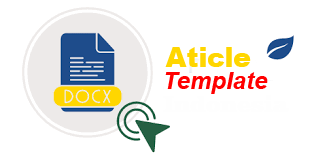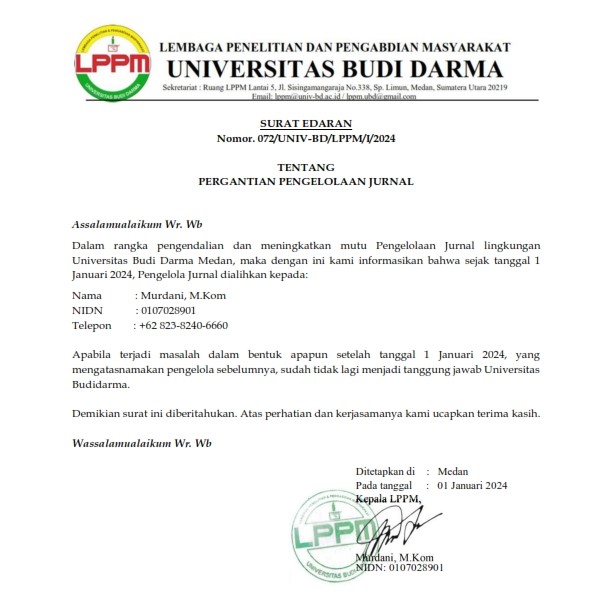Klasifikasi Mutu Pembelajaran Hybrid berdasarkan Algoritma C.45, Random Forest dan Naïve Bayes dengan Optimasi Bootsrap Areggating (Bagging) pada masa COVID-19
DOI:
https://doi.org/10.30865/jurikom.v9i6.5179Keywords:
Hybrid Learning, Random Forest, Naïve Bayes, C4.5, COVID-19Abstract
This study aims to find the best model from the 3 (three) models chosen, namely Random Forest, Naïve Bayes and C4.5 against the classification of hybrid learning quality held at SMK Cendekia Cirebon City during the COVID-19 period. The research method is carried out by referring to the approach or technique of machine learning with the stages of data collection, data preparation, data transformation, modeling and evaluation. The final results of this study are measured by the level of accuracy of hybrid learning quality aspects, namely teachers, subject matter, integrity, student motivation, and technology resources with bad, sufficient, good and very good categories.. Based on the experiments that have been carried out, the accuracy results for the Random Forest algorithm were obtained by 93.92%, Naïve Bayes by 93.22% and C4.5 by 77.16%. Thus this study recommends the best classification algorithm model based on dataset processing to measure this hybrid learning quality model is Random ForestReferences
B. H. Kemdikbud, SKB 4 Mentri RI, vol. 1, no. 5. 2020, p. 120280.
O. P. Limbong, W. Tambunan, and M. Limbong, “KESIAPAN PELAKSANAAN PEMBELAJARAN TATAP MUKA DI SMK NEGERI 2 TORAJA UTARA PADA MASA PANDEMI,†J. Manaj. Pendidik., vol. 10, no. 1, pp. 37–45, 2021, doi: 10.33541/jmp.v10i1.3265.
L. Khairiawati, “SPIN JURNAL KIMIA & PENDIDIKAN KIMIA DAMPAK PEMBELAJARAN DARING TERHADAP PSIKOLOGI BELAJAR SISWA SMA/SMK SEBAGAI EFEK PANDEMI COVID-19 DI LINGKUNGAN KARANG BUAYA PAGUTAN TIMUR,†SPIN, vol. 3, no. 2, pp. 154–164, 2021, doi: 10.20414/spin.v3i2.4250.
H. Hendrayati and B. Pamungkas, “IMPLEMENTASI MODEL HYBRID LEARNING PADA PROSES PEMBELAJARAN MATA KULIAH STATISTIKA II DI PRODI MANAJEMEN FPEB UPI.â€
J. R. Gultom, D. Sundara, and M. D. Fatwara, “PEMBELAJARAN HYBRID LEARNING MODEL SEBAGAI STRATEGI OPTIMALISASI SISTEM PEMBELAJARAN DI ERA PANDEMI COVID-19 PADA PERGURUAN TINGGI DI JAKARTA,†Mediastima, vol. 28, no. 1, pp. 11–22, Apr. 2022, doi: 10.55122/mediastima.v28i1.385.
M. Makhin, “HYBRID LEARNING: MODEL PEMBELAJARAN PADA MASA PANDEMI DI SD NEGERI BUNGURASIH WARU SIDOARJO,†MUDIR J. Manaj. Pendidik., vol. 3, no. 2, 2021, [Online]. Available: http://ejournal.insud.ac.id/index.php/mpi/index
T. Prasetio, “Perspektif: Jurnal Ekonomi & Manajemen Universitas Bina Sarana Informatika Umpan Balik Pada Model Pembelajaran Hybrid Mata Kuliah Ekonomi di Masa Pandemi COVID-19â€, doi: 10.31294/jp.v17i1.
B. Sumardiana, S. Fergina, S. Nurmala, T. S. Nanda, and N. N. Oktaviani, “Penerapan Hybrid Learning System di Era Pandemi Covid-19 Sebagai Upaya Untuk Mewujudkan Hak Belajar Anak.†[Online]. Available: https://journal.unnes.ac.id/sju/index.php/JPHI/index
S. Brereton, M. Curtin, E. Greene, P. Hardie, M. Szafranska, and C. Kirwan, “A Blended Learning Perineal Suturing Programme for Midwifery Students: An Evaluative Descriptive study,†Nurse Educ. Pract., p. 103453, Oct. 2022, doi: 10.1016/j.nepr.2022.103453.
S. Suwannaphisit, C. Anusitviwat, P. Tuntarattanapong, and C. Chuaychoosakoon, “Comparing the effectiveness of blended learning and traditional learning in an orthopedics course,†Ann. Med. Surg., vol. 72, Dec. 2021, doi: 10.1016/j.amsu.2021.103037.
L. Yang, “Research on quantitative evaluation method of teachers based on multiple linear regression,†in Proceedings - 2021 13th International Conference on Measuring Technology and Mechatronics Automation, ICMTMA 2021, Jan. 2021, pp. 858–862. doi: 10.1109/ICMTMA52658.2021.00196.
D. Sudrajat, R. D. Dana, N. Rahaningsih, A. R. Dikananda, and D. A. Kurnia, “Clustering student’s satisfaction in complex adaptive blended learning with the six value system using the K-means algorithm,†Univers. J. Educ. Res., vol. 7, no. 9, pp. 1990–1995, 2019, doi: 10.13189/ujer.2019.070920.
C. Schröer, F. Kruse, and J. M. Gómez, “A systematic literature review on applying CRISP-DM process model,†Procedia Comput. Sci., vol. 181, no. 2019, pp. 526–534, 2021, doi: 10.1016/j.procs.2021.01.199.
A. S. More and D. P. Rana, “Review of random forest classification techniques to resolve data imbalance,†Proc. - 1st Int. Conf. Intell. Syst. Inf. Manag. ICISIM 2017, vol. 2017-Janua, pp. 72–78, 2017, doi: 10.1109/ICISIM.2017.8122151.
D. Jollyta, G. Gusrianty, and D. Sukrianto, “Analysis of Slow Moving Goods Classification Technique: Random Forest and Naïve Bayes,†Khazanah Inform. J. Ilmu Komput. dan Inform., vol. 5, no. 2, pp. 134–139, 2019, doi: 10.23917/khif.v5i2.8263.
E. Elisa, “Analisa dan Penerapan Algoritma C4.5 Dalam Data Mining Untuk Mengidentifikasi Faktor-Faktor Penyebab Kecelakaan Kerja Kontruksi PT.Arupadhatu Adisesanti,†J. Online Inform., vol. 2, no. 1, p. 36, 2017, doi: 10.15575/join.v2i1.71.
D. Ratnaningrum, M. A. Mukid, and T. Wuryandari, “Analisis Klasifikasi Nasabah Kredit Menggunakan Bootstrap Aggregating Classification and Regression Trees (Bagging Cart),†J. Gaussian, vol. 5, no. 1, pp. 81–90, 2016, [Online]. Available: http://ejournal-s1.undip.ac.id/index.php/gaussian
C. D. Sutton, “Classification and Regression Trees, Bagging, and Boosting,†Handb. Stat., vol. 24, no. 04, pp. 303–329, 2005, doi: 10.1016/S0169-7161(04)24011-1.








